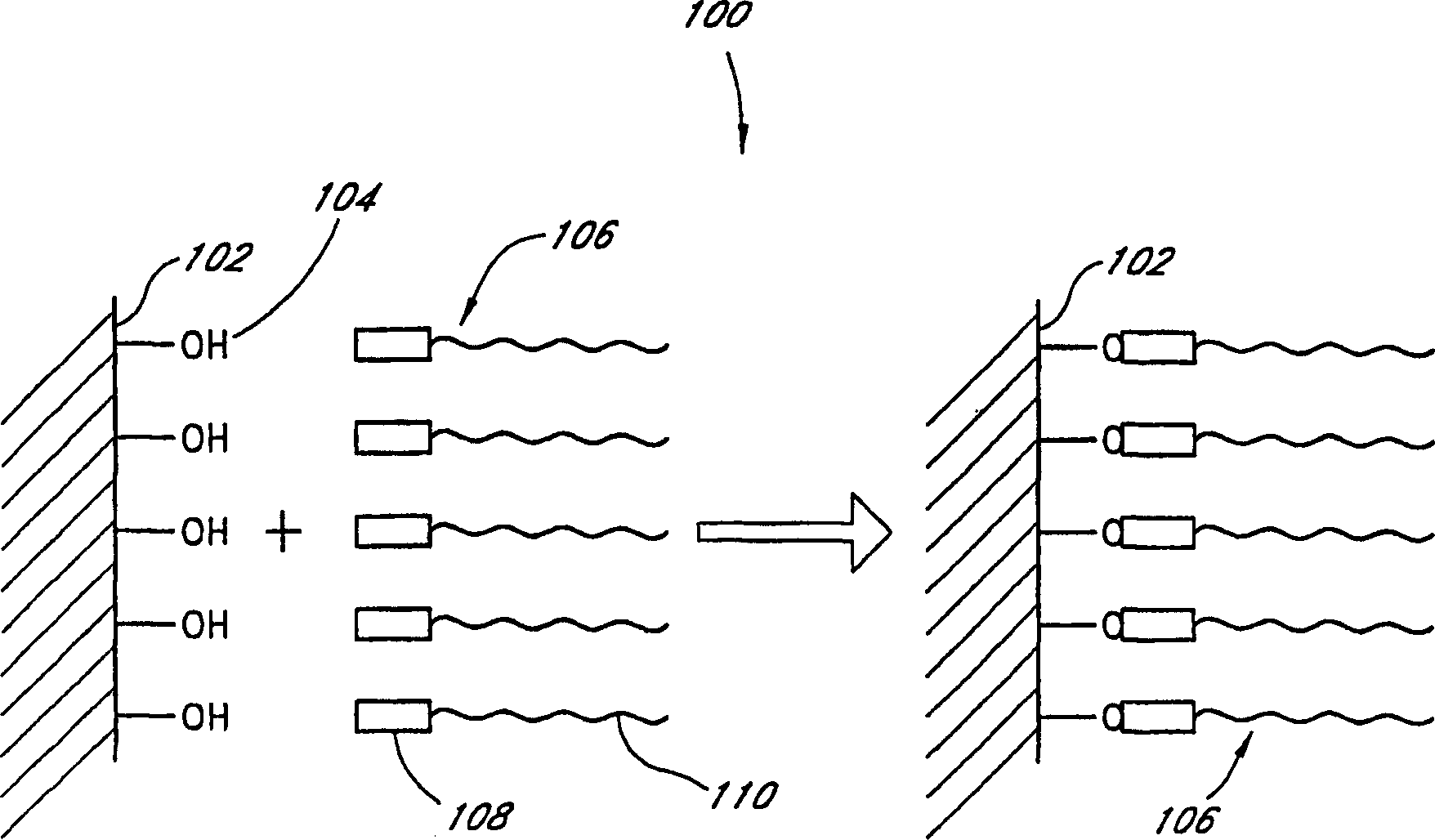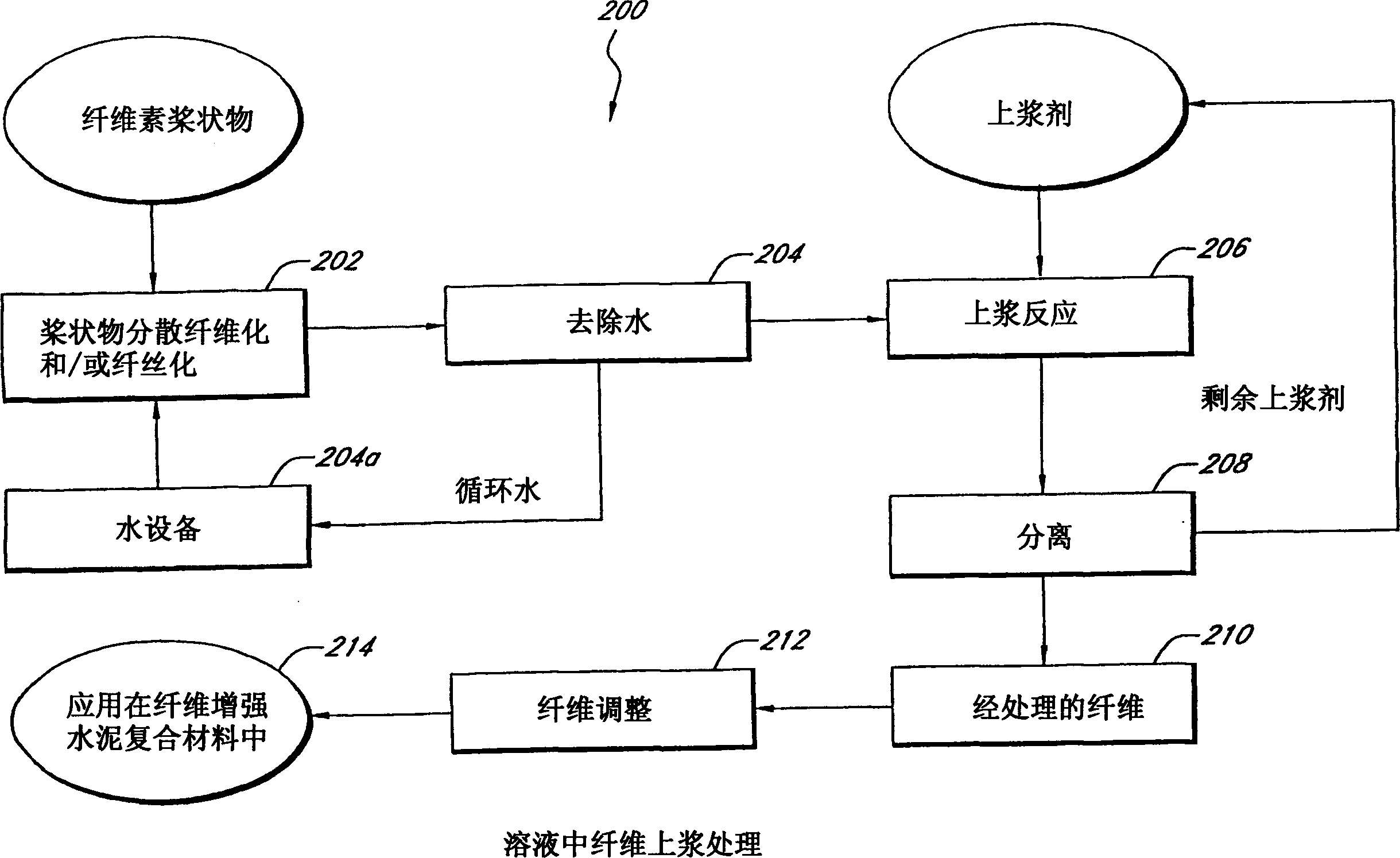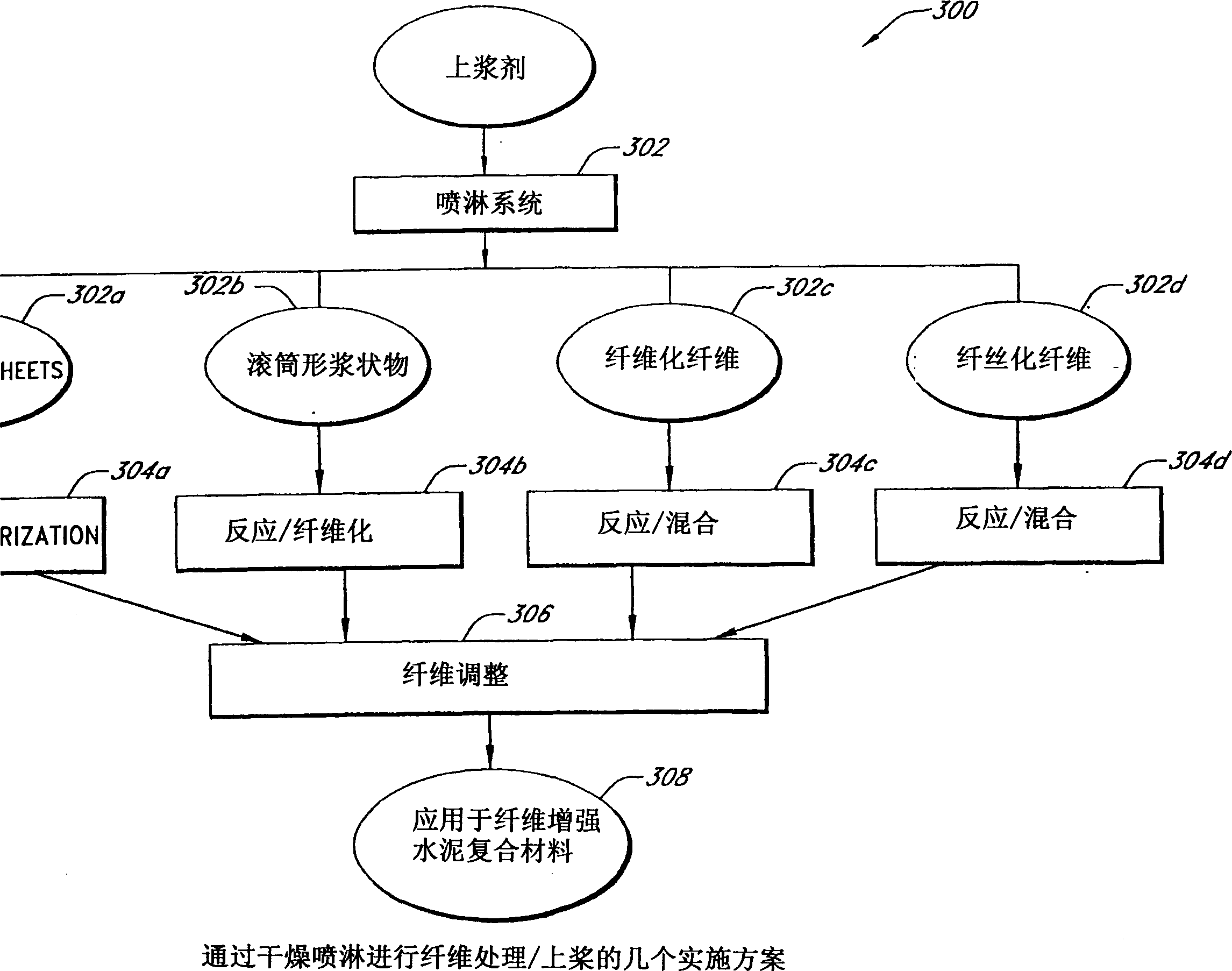Fiber cement composition materials using cellulose fibers loaded with inorganic and/or organic substances
A cellulose fiber and fiber cement technology, used in fiber raw material processing, building materials, plant fibers, etc., can solve problems such as reducing freeze-thaw cycle resistance, increasing the rate and amount of water absorption into products, and improving mechanical and physical properties. properties, improved mechanical properties and usability, effect of high water absorption
- Summary
- Abstract
- Description
- Claims
- Application Information
AI Technical Summary
Problems solved by technology
Method used
Image
Examples
Embodiment 1
[0167] Unbleached kraft softwood pulp was pre-polished to 500 CSF before the treated and ground pulp was used in the sizing process. The sized fibers were prepared by treating the lapped fibers with an alkylsiloxane (ChemRex Enviroseal 100) at a pulp consistency of 4% for one hour. The dosage of sizing agent is 10% of the fiber mass, while the reaction temperature under atmospheric pressure is ambient temperature. Samples of fiber cement composites were formed using laboratory equipment. Samples A and B of the following examples, as well as C, D, E, F and G, had the same formulation of: 8% fiber (treated / sized fiber or generally untreated fiber), 35% % Portland cement and 57% ground silica. The samples were air cured at ambient temperature for 8 hours, followed by hot pressing at 180°C for 12 hours. The physical and mechanical properties of samples A and B are shown in Table 2.
[0168] physical properties
sample
A
B (control)
MOR(MPa) ...
Embodiment 2
[0174] Figure 5 Interpret the results of the water permeability test. Sample D was a control incorporating conventional unsized cellulose fibers, while sample C was prepared with a formulation containing treated cellulose fibers in a dosage of 5% acrylic latex (Valspar EPS2118) based on the fiber mass deal with. The sizing reaction was carried out at ambient temperature for 30 minutes. Samples C and D have an oven-dried density of about 1.3 grams per cubic centimeter.
[0175] The water permeability test involves attaching a tube to the sample material surface such that one end of the tube is configured adjacent to the material sample surface. The tube is made of acrylic material, about 125mm long and about 50mm internal diameter. After preconditioning the sample to 23±2°C and relative humidity equilibrated to 50±5%, the tube was filled with water while periodically recording the water level inside the tube. The drop in water level in the recording tube is recorded as wa...
Embodiment 3
[0179] Freeze-thaw resistance refers to the ability of a material to resist damage due to water and temperature effects when the material is exposed to repeated cycles of freezing and thawing. For concrete cementitious materials, the damage usually begins with exfoliation of the surface, and then gradually expands to the inside. Sometimes deep cracks may occur. Freezing-related damage usually does not occur unless a sufficient amount of water is stored in the cavity. It is known that freeze-thaw damage in concrete can be minimized when the concrete material has a low water to cement ratio and low permeability.
[0180] An advantage of the preferred embodiments is that the final product has improved freeze-thaw resistance, as shown in Figure 6 . Sample E contained cellulose fibers that were typically unsized and Sample F contained fibers that had been treated / sized with an emulsified silicone oil containing a number of compounds including n-octyltriethoxysilane, n-octyltrim...
PUM
| Property | Measurement | Unit |
|---|---|---|
| density | aaaaa | aaaaa |
Abstract
Description
Claims
Application Information
 Login to View More
Login to View More - Generate Ideas
- Intellectual Property
- Life Sciences
- Materials
- Tech Scout
- Unparalleled Data Quality
- Higher Quality Content
- 60% Fewer Hallucinations
Browse by: Latest US Patents, China's latest patents, Technical Efficacy Thesaurus, Application Domain, Technology Topic, Popular Technical Reports.
© 2025 PatSnap. All rights reserved.Legal|Privacy policy|Modern Slavery Act Transparency Statement|Sitemap|About US| Contact US: help@patsnap.com



